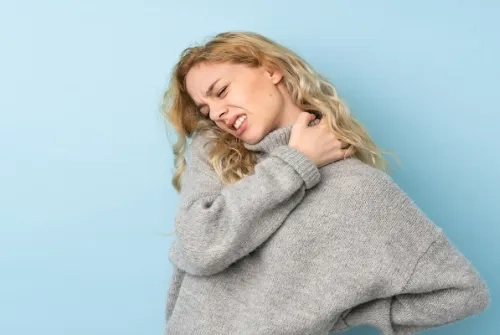Alo Yeditepe
Alo Yeditepe
Beware of Joint and Muscle Pain in the Winter Months!
Yeditepe University Hospitals Physical Therapy and Rehabilitation specialists gave information about the pain that occurs or increases especially in the winter months. Stating that pain increases especially in joint rheumatism and muscle disorders in winter, the physician says, "Patients can prevent these pains by taking certain measures."
Patients with Joint Rheumatism May Have Increased Pain
Pointing out that the pain may increase especially in patients with joint rheumatism due to the change in air pressure in cold and rainy weather, the physician explains the process behind it as follows: “Since the pressure receptors in the damaged joints are also damaged in patients with joint rheumatism, the patient becomes more sensitive to even the slightest air pressure. Therefore, especially in rainy weather, pain increases in this patient group. " At the same time, stating that there is contraction and shortening in the muscles due to the contraction of the muscles and vessels due to cold weather and that the blood circulation to these muscles is impaired, the physician says, "Cold weather can also cause an increase in pain in muscle disorders such as fibromyalgia and myofascial pain syndrome."
Increased Time in Traffic Increases Muscle Pain
In addition, reminding that working life is more intense and more stressful in the winter season, and the time spent in traffic has increased, the physician draws attention to the fact that joint and muscle pains have increased in these months, especially in desk jobs. “In the summer, the work environment is generally calmer. In addition, since the days are longer, sports facilities are more available outside of work, and people live a more active life in the summer. On the other hand, there are more holiday opportunities in the summer months. In winter, these opportunities are reduced. These are other reasons why people with muscle and joint disorders may experience increased pain during the winter.”
Production of Vitamin D and Serotonin Secretion Decrease in Winter
Underlining that another reason for the increase in pain in winter is vitamin D deficiency, the physician: "Vitamin D level decreases in winter because it is less exposed to sun rays. This can also increase muscle and joint pain. Supplementation is needed. On the other hand, the physician states that the decrease in sunlight rays reduces the secretion of serotonin, that is, happiness hormone, and the effect of this situation on joint and muscle pain as follows: "Serotonin is not only a happy substance, but also an effective substance in reducing pain and is used as a medicine in the treatment of pain."
“One question that our patients often ask is whether they can go into physical therapy in the winter. There is a false perception that it will be negatively affected when it goes into cold air after treatment. That is not true. There is nothing negative about being a physical therapist in the winter. It is important for patients to come during the winter period. Because in this period when pain is likely to increase, they should get an opinion from an expert about the measures they will take in their daily lives. Exercises should be regulated, and the doctor should be consulted about additional precautions.”
Physical Therapy is Not Addictive
The physician, who has made another misunderstanding about physical therapy, illuminates this issue as follows: “There is a false belief that physical therapy is addictive. That’s also not correct. Physical therapy is not addictive. Joint and muscle diseases are chronic diseases that do not completely heal. The treatment may need to be repeated. After about a year, the treatment may need to be repeated, and there is no harm in that. In order for this not to happen, patients should follow our recommendations after treatment. If the patient says, "I have recovered somehow" because the pain has passed and does not pay attention to them, the disease may recur, and s/he may need to undergo physical therapy again sooner than expected. "
This content was prepared by Yeditepe University Hospitals Medical Editorial Board.
”
See Also
- What is Neurological Rehabilitation?
- What is Scoliosis? Exercise Methods in Scoliosis Treatment
- Benefits of Being Limber
- Benefits of Physiotherapy and Rehabilitation in Spinal Cord Injury
- Fibromyalgia in Children
- Spinal Cord Injuries and Symptoms
- Lumbar Disc Herniation (Herniated Disc)
- Sports Injuries
- Piriformis Syndrome May Be the Cause of Low Back Pain and Numbness in the Legs
- What is Lymphedema?
- The Way to Peace: Yoga
Alo Yeditepe




